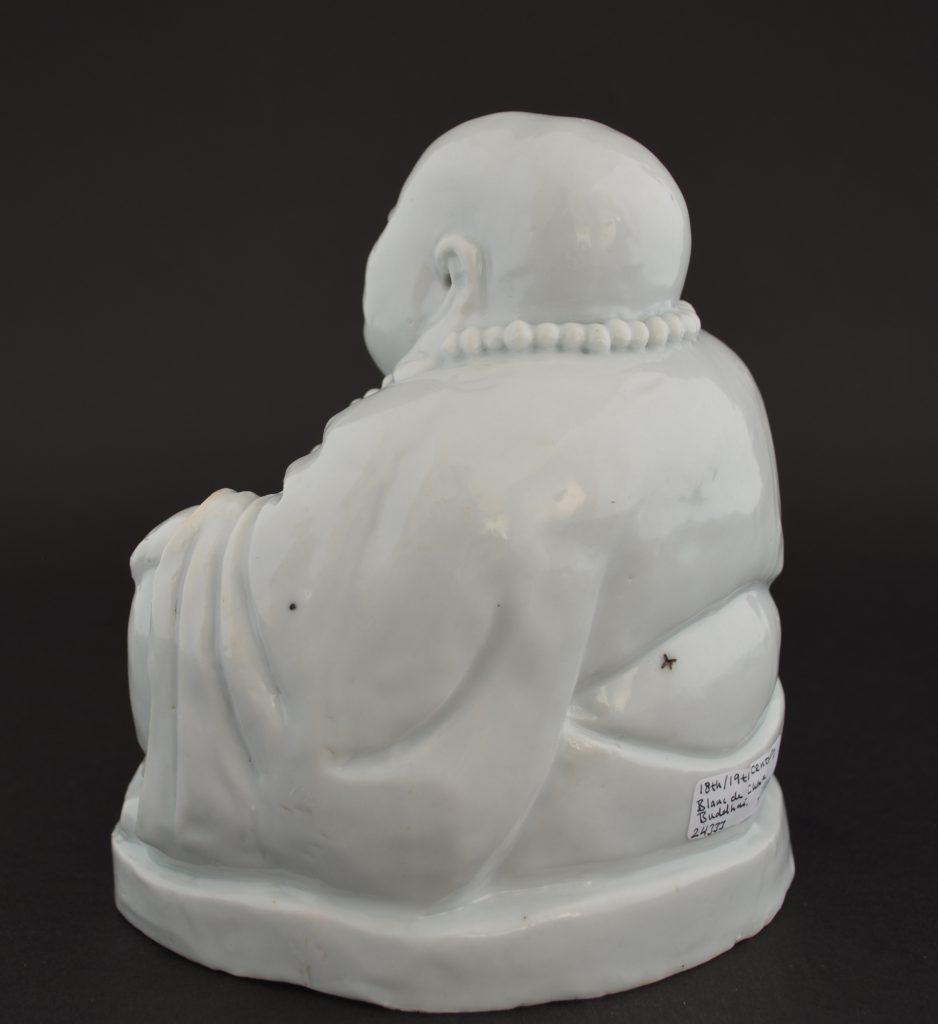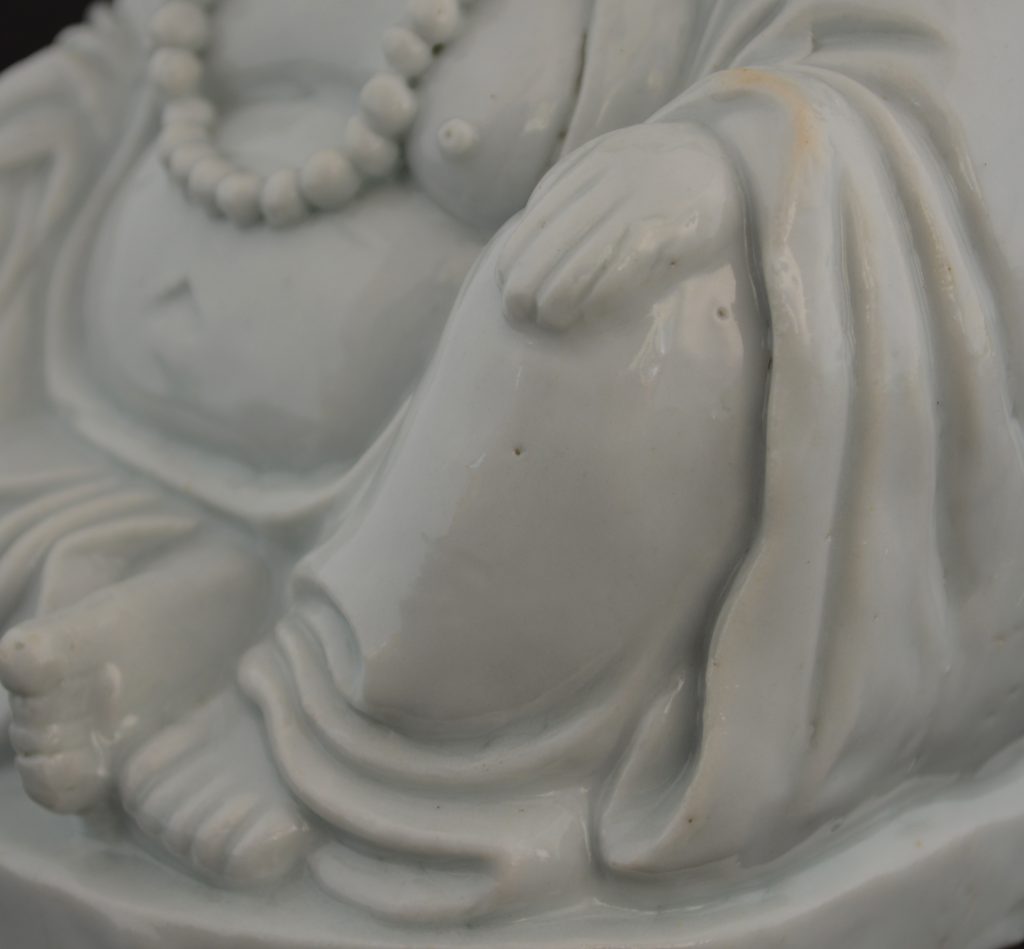
18th or 19th CENTURY Blanc de Chine Porcelain
An 18th or 19th Century Blanc de Chine Porcelain Model of Budai. Showing in Typical Pose with His Clock Open to Expose is Generous Proportions and with a String of Beads Around His Neck.
SOLD
- Condition
- In excellent condition, a small shallow chip to the base c.9 x 8 mm
- Size
- Height : 16.2 cm (6 1/3 inches )
- Provenance
- N/A
- Stock number
- 24333
Information
he dating of figures such as this is very difficult but it is certainly 18th or 19th century, perhaps c.1750-1820. I dated a related figure (`Sold Items 18748) to c.1780-1820 some time ago.
Budai :
Budai (Hotei in Japanese) is a Chinese deity. His name means `Cloth Sack`, and comes from the bag that he carries. According to Chinese tradition, Budai was an eccentric Chinese Zen monk who lived during the 10th Century. He is almost always shown smiling or laughing, hence his nickname in Chinese, the Laughing Buddha. In English speaking countries, he is popularly known also as the `Fat Buddha`. Budai is often depicted as having the appearance of an amply proportioned bald man wearing a robe and wearing or otherwise carrying prayer beads. He carries his few possessions in a cloth sack, being poor but content. His figure appears throughout Chinese culture as a representation of contentment. His image graces many temples, restaurants, amulets, and businesses. Amongst Westerners new to Buddhism, Budai is often confused with the historical Buddha, Siddhartha Gautama. However, the two are visually very distinct. Gautama is commonly depicted as being tall and slender in appearance (although since no images of him from his lifetime exist, this depiction of him is unverifiable and possibly idealized); Budai is short and overweight. (Buddha means "one who has achieved a state of perfect enlightenment" and there are several people who have been given the title).






